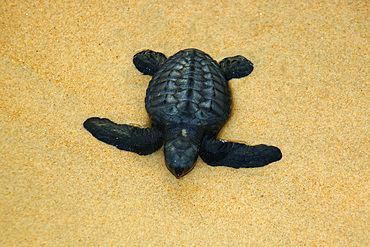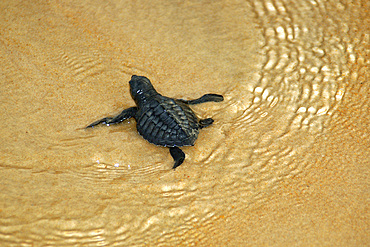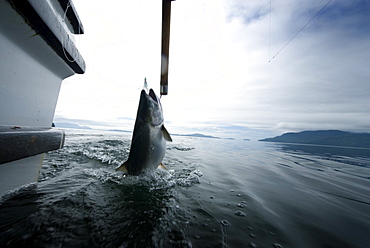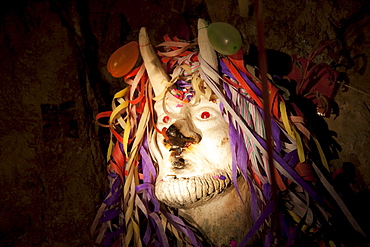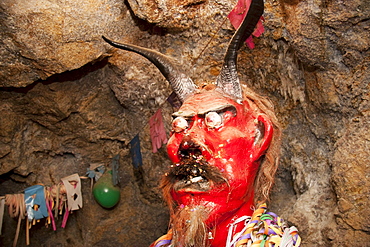Recent searches
Loading...
746-90374 - The cowpea is the only native bean of the Old World, in fact it is native to Africa and Asia
1350-2318 - Olive ridley turtle hatchling, Lepidochelys olivacea, Costa do Sauipe, Bahia, Brazil (South Atlantic)
1350-2317 - Olive ridley turtle hatchling, Lepidochelys olivacea, Costa do Sauipe, Bahia, Brazil (South Atlantic)
857-91048 - August 18, 08 A Coho salmon is caught off the coast of Prince of Whales Island Alaska. Trolling for salmon is considered the "high-end" fishery because the way they catch is not harmful to the fish, in fact any by-catch or non-keeper salmon can be tossed back with little damage to the fish. So since the fish are in such good shape when caught, on individual hooks on long lines, they can be brought in and prepared or dressed (gutted and bled) and then iced within minutes and then within hours are on the troll tender that fillets and vacume pacs and then flash freezes them, so that most of the fresh caught fish for pricier consumption is troller caught, United States of America
1116-25172 - Ceramic figure of el Tio or Supai, a creature with horns, gleaming eyes and a big penis, that in fact is not really satanic. It was introduced by the Spaniards in the 16th Century to the mines of Potosi. According to tradition, el Tio (The Uncle) rules over the mines of Cerro Rico, simultaneously offering protection and destruction. Over 500 chambers with statues to honour him have been constructed in Cerro Rico, so miners can leave offerings of tobacco, liquor and coca leaves to invoke his goodwill and protection., Potosi Department, Bolivia
1116-25174 - Ceramic figure of el Tio or Supai, a creature with horns, gleaming eyes and a big penis, that in fact is not really satanic. It was introduced by the Spaniards in the 16th Century to the mines of Potosi. According to tradition, el Tio (The Uncle) rules over the mines of Cerro Rico, simultaneously offering protection and destruction. Over 500 chambers with statues to honour him have been constructed in Cerro Rico, so miners can leave offerings of tobacco, liquor and coca leaves to invoke his goodwill and protection., Potosi Department, Bolivia
1116-25173 - Ceramic figure of el Tio or Supai, a creature with horns, gleaming eyes and a big penis, that in fact is not really satanic. It was introduced by the Spaniards in the 16th Century to the mines of Potosi. According to tradition, el Tio (The Uncle) rules over the mines of Cerro Rico, simultaneously offering protection and destruction. Over 500 chambers with statues to honour him have been constructed in Cerro Rico, so miners can leave offerings of tobacco, liquor and coca leaves to invoke his goodwill and protection., Potosi Department, Bolivia
857-30896 - Kazuko Uezu, age 65, makes tofu before dawn in her small shop in the village of Hedo. Despite 50 years of practice "every batch tastes slightly different" says Kazuko who rises at 4-am seven days a week to make tofu. Traditional methods and a small production produces subtle variations in every batch despite the fact that tofu has only two ingredients, salt water and soy beans. Kazuko get the salt water from the East China Sea (just down the road from her house) but the soybeans come from America. Okinawan centenarians eat tofu daily and it is believed the high flavanoid content in tofu contributes to their longevity. Flavanoids are known to fight breast and prostate cancer and believed to combat heart disease.
857-33773 - A girl in the Meira tent camp for earthquake survivors stands on top of a pile of her family's belongings as they wait for transportation from the camp, where they have spent the winter, back to their devastated mountain village, in the NWFP, Pakistan. The Pakistani army, which runs the camp, has mandated that the camps be cleared by early April, despite the fact that many families are afraid or unprepared to return to their devastated homes. The Meira Tent camp (also called Mera, or Maria camp), is located on the Indus River in the Battagram district. The camp, the largest for displaced people in Pakistan, hosts over 21,000 earthquake survivors, primarily from the Allai valley in Pakistan's NWFP, one of the areas worst-hit by the October 8, 2005 earthquake.
857-33522 - In the Meira camp for earthquake survivors, two Pashtun men sit by piles of family possesions, waiting for the truck which will take them from the camp, where they have spent the winter, back to their devastated mountain village, in the Northwest Frontier Province, Pakistan. The Pakistani army, which runs the camp, has mandated that the camps be cleared by early April, despite the fact that many families are afraid or unprepared to return to their devastated homes. The Meira Tent camp (also called Mera, or Maria camp), is located on the Indus River in the Battagram district. The camp, the largest for displaced people in Pakistan, hosts over 21,000 earthquake survivors, primarily from the Allai valley in Pakistan's NWFP, one of the areas worst-hit by the October 8, 2005 earthquake.
857-30893 - Kazuko Uezu, age 65, makes tofu before dawn in her small shop in the village of Hedo. Despite 50 years of practice "every batch tastes slightly different" says Kazuko who rises at 4-am seven days a week to make tofu. Traditional methods and a small production produces subtle variations in every batch despite the fact that tofu has only two ingredients, salt water and soy beans. Kazuko get the salt water from the East China Sea (just down the road from her house) but the soybeans come from America. Okinawan centenarians eat tofu daily and it is believed the high flavanoid content in tofu contributes to their longevity. Flavanoids are known to fight breast and prostate cancer and believed to combat heart disease.
857-30895 - Kazuko Uezu, age 65, makes tofu before dawn in her small shop in the village of Hedo. Despite 50 years of practice "every batch tastes slightly different" says Kazuko who rises at 4-am seven days a week to make tofu. Traditional methods and a small production produces subtle variations in every batch despite the fact that tofu has only two ingredients, salt water and soy beans. Kazuko get the salt water from the East China Sea (just down the road from her house) but the soybeans come from America. Okinawan centenarians eat tofu daily and it is believed the high flavanoid content in tofu contributes to their longevity. Flavanoids are known to fight breast and prostate cancer and believed to combat heart disease.
979-4423 - Adult Southern Rockhopper Penguins (Eudyptes chrysocome chrysocome) in the Falkland Islands. This is the smallest yellow-crested, black-and-white penguin in the genus Eudyptes. It reaches a length of 45-58 cm (18-23 in) and typically weighs 2-3.4 kg (4.4-7.5 lb), although there are records of exceptionally large rockhoppers weighing 5 kg (11 lbs). Their common name refers to the fact that unlike many other penguins which negotiate obstacles by sliding on their bellies or by awkward climbing using their flipper-like wings as aid, Rockhoppers will try to jump over boulders and across cracks. This behavior is by no means unique to this species however - at least the other "crested" penguins of the genus Eudyptes hop around rocks too. Southern Rockhopper Penguins have a global population of roughly 1 million pairs, perhaps a bit more. About two-thirds of the global population belongs to E. c. chrysocome which breeds on the Falkland Islands and on islands off Argentina and southern Chile. The Southern Rockhopper Penguin is classified as Vulnerable species by the IUCN.
911-7114 - A poster in the St. Just Coop highlighting the fact that all of the Coop's supermarkets are powered by electricity generated from renewable energy, Cornwall, England, United Kingdom, Europe
You reached the end of search results


